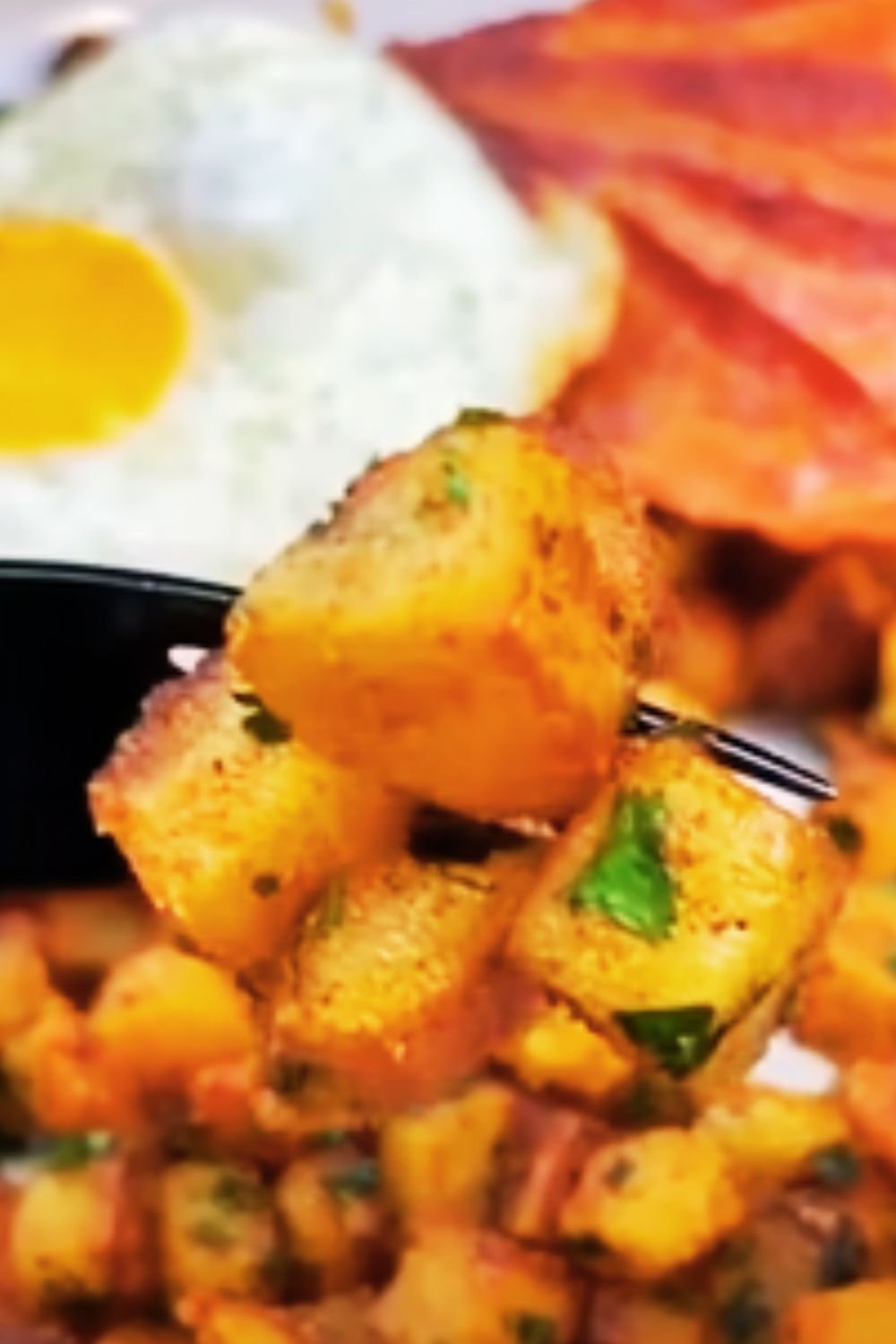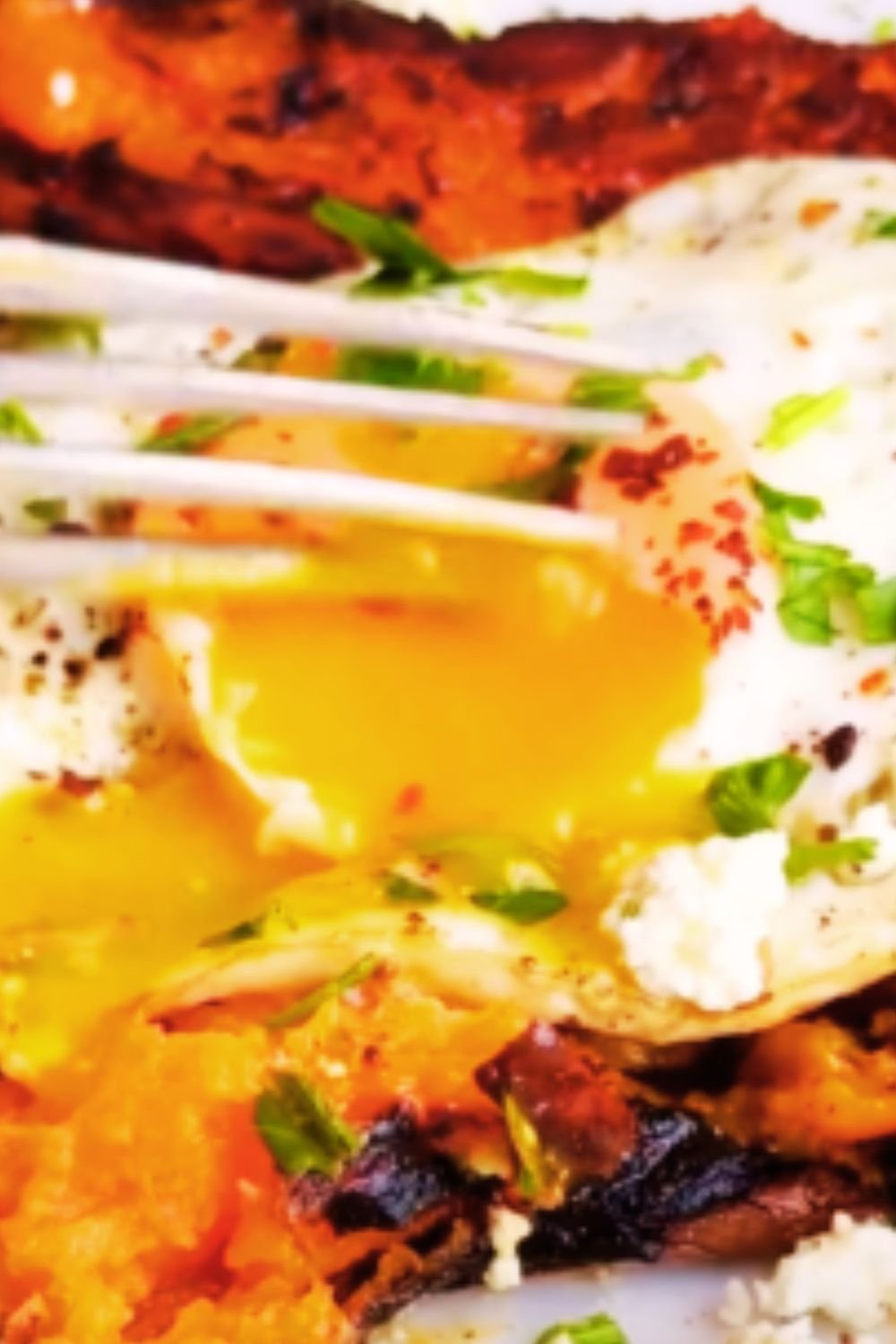There’s something magical about the way Spanish cuisine transforms simple ingredients into extraordinary dishes. I’ve always been captivated by how a handful of humble components—eggs, potatoes, olive oil, and spices—can create a meal that’s both comforting and sophisticated. Today, I’m sharing one of my favorite breakfast recipes that brings the sunny Mediterranean flavors right to your kitchen: Spanish-Style Eggs with Roasted Potatoes.
The Story Behind the Dish
The first time I tasted this dish was during a trip through rural Spain, where I stopped at a small roadside café just outside of Barcelona. It was early morning, and local farmers were enjoying their breakfast before heading to their fields. The aroma wafting from the kitchen was irresistible—garlic, olive oil, and the unmistakable scent of potatoes crisping in a pan.
What arrived at my table was deceptively simple: perfectly cooked eggs nestled among golden potatoes, with hints of paprika, garlic, and fresh herbs. The dish wasn’t fancy, but it was profoundly satisfying in a way that only honest, well-prepared food can be.
This Spanish-style egg dish draws inspiration from various regional Spanish recipes. It incorporates elements of “huevos rotos” (broken eggs) and “patatas a lo pobre” (poor man’s potatoes), creating something that’s greater than the sum of its parts.
Key Ingredients That Make This Dish Special
Olive Oil: Not just any olive oil—Spanish extra virgin olive oil brings a distinct fruity, peppery flavor that forms the foundation of this dish.
Pimentón de la Vera: This smoked Spanish paprika is what gives the dish its characteristic warm color and subtle smokiness. There’s simply no substitute that delivers the same authentic flavor.
Potatoes: Ideally, you want a waxy variety like Yukon Gold that will hold its shape while developing a beautiful crispy exterior and creamy interior.
Fresh Eggs: The stars of the show deserve to be the best quality you can find. Farm-fresh eggs with vibrant orange yolks will elevate this dish significantly.
Garlic: Spanish cuisine relies heavily on garlic, and this dish is no exception. Fresh cloves slowly cooked in olive oil infuse everything with their aromatic essence.
Essential Equipment
Before we begin, let’s make sure you have the right tools on hand:
- A heavy-bottomed skillet (cast iron works beautifully here)
- A sharp knife for precise potato cutting
- A slotted spatula for flipping and serving
- Mortar and pestle (traditional but optional, for crushing garlic and herbs)
The Complete Recipe
Ingredients
For the Roasted Potatoes:
- 1½ pounds (680g) waxy potatoes (Yukon Gold preferred)
- ¼ cup (60ml) Spanish extra virgin olive oil
- 4 garlic cloves, thinly sliced
- 1 teaspoon smoked Spanish paprika (pimentón)
- 1 teaspoon sweet paprika
- ½ teaspoon dried oregano
- 1 bay leaf
- Salt and freshly ground black pepper to taste
For the Eggs:
- 4-6 large eggs (depending on appetite)
- 2 tablespoons olive oil
- ¼ teaspoon smoked paprika
- Salt and freshly ground black pepper
For Garnish:
- 3 tablespoons finely chopped fresh parsley
- 2 tablespoons finely chopped fresh chives
- Lemon wedges for serving
- Crusty bread (optional, for serving)
Preparation Method
Step 1: Prepare the Potatoes
- Wash the potatoes thoroughly but leave the skins on for extra flavor and texture.
- Cut the potatoes into ½-inch (1.25cm) cubes. Consistent size ensures even cooking.
- Place the cut potatoes in a bowl of cold water for 15 minutes to remove excess starch, then drain thoroughly and pat dry with paper towels.
Step 2: Season and Begin Cooking
- Heat ¼ cup olive oil in a large cast-iron skillet over medium heat.
- Add the sliced garlic and cook gently until fragrant but not browned, about 1 minute.
- Add the bay leaf and continue cooking for another 30 seconds to infuse the oil.
Step 3: Roast the Potatoes
- Add the dried, cubed potatoes to the oil in a single layer (work in batches if necessary).
- Season with salt, black pepper, both paprikas, and dried oregano.
- Cook without stirring for 5-7 minutes until the bottom side begins to turn golden.
- Carefully flip the potatoes with a spatula and continue cooking, tossing occasionally, until all sides are crispy and golden brown, about 15-20 minutes total.
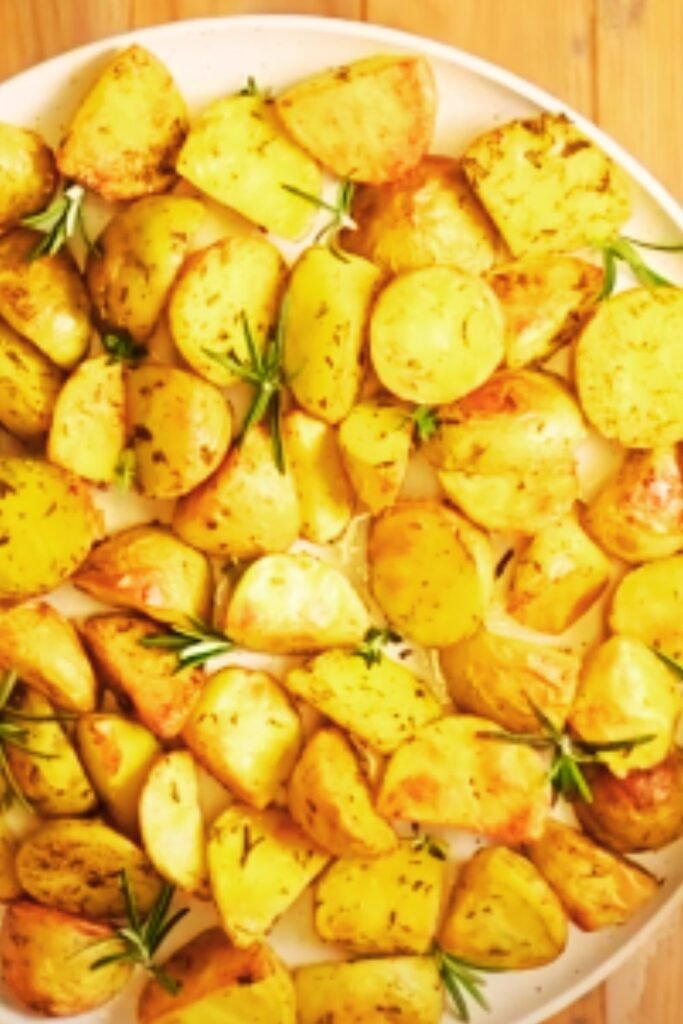
Step 4: Create Wells and Add Eggs
- Once the potatoes are perfectly crisp, use the back of a spoon to create 4-6 small wells among the potatoes.
- Drizzle the remaining 2 tablespoons of olive oil around the edges of the skillet.
- Carefully crack an egg into each well.
- Sprinkle each egg with a pinch of smoked paprika, salt, and black pepper.
Step 5: Cook the Eggs
- Cover the skillet with a lid or foil and reduce heat to low.
- Cook until the egg whites are set but the yolks are still runny, about 3-5 minutes.
- For firmer yolks, cook for an additional 1-2 minutes.
Step 6: Garnish and Serve
- Remove the skillet from heat and discard the bay leaf.
- Sprinkle the dish with fresh parsley and chives.
- Serve immediately with lemon wedges and crusty bread if desired.
Pro Tips for Perfect Results
Through years of making this dish, I’ve discovered several tricks that elevate it from good to exceptional:
- Cold Water Soak: Don’t skip the potato soaking step. It removes excess starch and helps achieve the perfect crispy exterior.
- Oil Temperature: Make sure your oil is properly heated before adding the potatoes. It should shimmer but not smoke.
- Patient Cooking: Resist the urge to stir the potatoes constantly. Allowing them to develop a crust before flipping is crucial for texture.
- Quality Ingredients: This simple dish relies heavily on the quality of its few ingredients. Splurge on good Spanish olive oil and paprika.
- Proper Salt Timing: Season the potatoes at the beginning of cooking, but wait until the end to salt the eggs to prevent them from becoming tough.
Nutritional Benefits
What makes this dish not just delicious but also nutritionally sound? Let’s break it down:
| Nutrient | Amount per Serving | Benefit |
|---|---|---|
| Protein | 12-15g | Supports muscle maintenance and provides sustained energy |
| Healthy Fats | 18g | Olive oil provides heart-healthy monounsaturated fats |
| Carbohydrates | 25g | Complex carbs from potatoes offer sustained energy |
| Vitamin A | 20% DV | Promotes eye health and immune function |
| Vitamin C | 35% DV | Supports immune system and collagen production |
| Vitamin B12 | 45% DV | Essential for nerve function and red blood cell formation |
| Iron | 15% DV | Critical for oxygen transport throughout the body |
| Potassium | 20% DV | Helps maintain healthy blood pressure |
| Fiber | 3g | Aids digestion and promotes satiety |
*Values are approximate and based on a serving with 1 egg and ¼ of the potato mixture.
Flavorful Variations to Try
While the classic recipe is perfect as is, I love experimenting with regional adaptations:
Andalusian-Style
- Add ½ cup diced roasted red peppers
- Include 2 tablespoons capers
- Sprinkle with sherry vinegar before serving
Catalan-Style
- Mix in ¼ cup sofrito (sautéed onion, tomato, and pepper base)
- Add 2 tablespoons raisins soaked in wine
- Garnish with toasted pine nuts
Northern Spanish Variation
- Include ¼ cup diced Spanish chorizo
- Add ½ cup sautéed wild mushrooms
- Finish with grated Manchego cheese
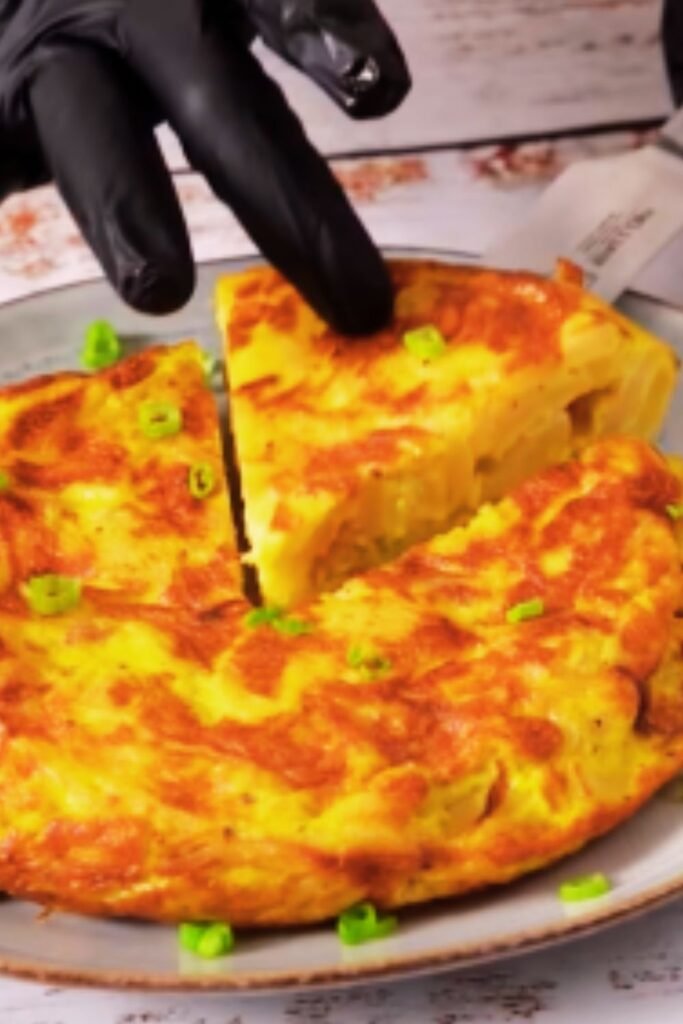
Serving Suggestions
This versatile dish works beautifully for multiple occasions:
For Brunch
- Serve with a simple green salad dressed with sherry vinaigrette
- Offer warm crusty bread for soaking up the runny egg yolks
- Accompany with marinated olives and Manchego cheese
For Light Dinner
- Pair with a tomato and cucumber gazpacho
- Serve alongside grilled asparagus with lemon
- Complete the meal with fresh fruit for dessert
For Tapas-Style Gathering
- Present in small terracotta dishes alongside other Spanish small plates
- Complement with Patatas Bravas, Garlic Shrimp, and Spanish Tortilla
- Fresh sangria (alcohol-free version made with grape juice) complements beautifully
Common Challenges & Solutions
Even experienced cooks sometimes encounter issues with this seemingly simple dish. Here’s how to troubleshoot:
| Problem | Cause | Solution |
|---|---|---|
| Potatoes sticking to pan | Pan not hot enough when potatoes added | Heat oil properly before adding potatoes |
| Soggy potatoes | Too crowded in the pan or potatoes not dried properly | Cook in batches and thoroughly pat dry potatoes |
| Overcooked egg yolks | Heat too high or cooked too long | Lower heat and watch carefully for desired doneness |
| Burnt garlic | Heat too high when adding garlic | Cook garlic on medium-low heat until just fragrant |
| Bland flavor | Insufficient seasoning or low-quality paprika | Season adequately and invest in good Spanish paprika |
| Unevenly cooked potatoes | Inconsistent cutting size | Ensure uniform potato pieces for even cooking |
Historical Context
Understanding the cultural background enriches the experience of making and eating this dish. Spanish egg and potato dishes evolved during times when simple, affordable ingredients needed to stretch far. Farm workers needed hearty, energy-dense breakfasts to sustain them through long days of physical labor.
The combination of eggs and potatoes appears throughout Spanish regional cooking, from the tortilla española (Spanish potato omelet) to huevos a la flamenca (Flamenco eggs). These dishes represent the Mediterranean diet’s emphasis on simple preparation methods that highlight quality ingredients.
In traditional Spanish homes, these dishes were typically cooked in earthenware vessels over open flames, which imparted a distinctive smoky flavor. While modern kitchens use different equipment, we can still capture the essence of those traditional methods through ingredients like smoked paprika.
Sustainability Considerations
As a passionate cook, I believe in considering the environmental impact of our food choices:
Seasonal Awareness
- Use locally grown, seasonal potatoes when possible
- Add seasonal vegetables as side accompaniments
Reducing Waste
- Save potato peels for making vegetable stock
- Use leftover roasted potatoes in a breakfast hash the next day
- Store herbs properly to extend their life (in damp paper towels in the refrigerator)
Energy Efficiency
- Cook multiple dishes using the oven when it’s already heated
- Use appropriately sized pans to maximize energy efficiency
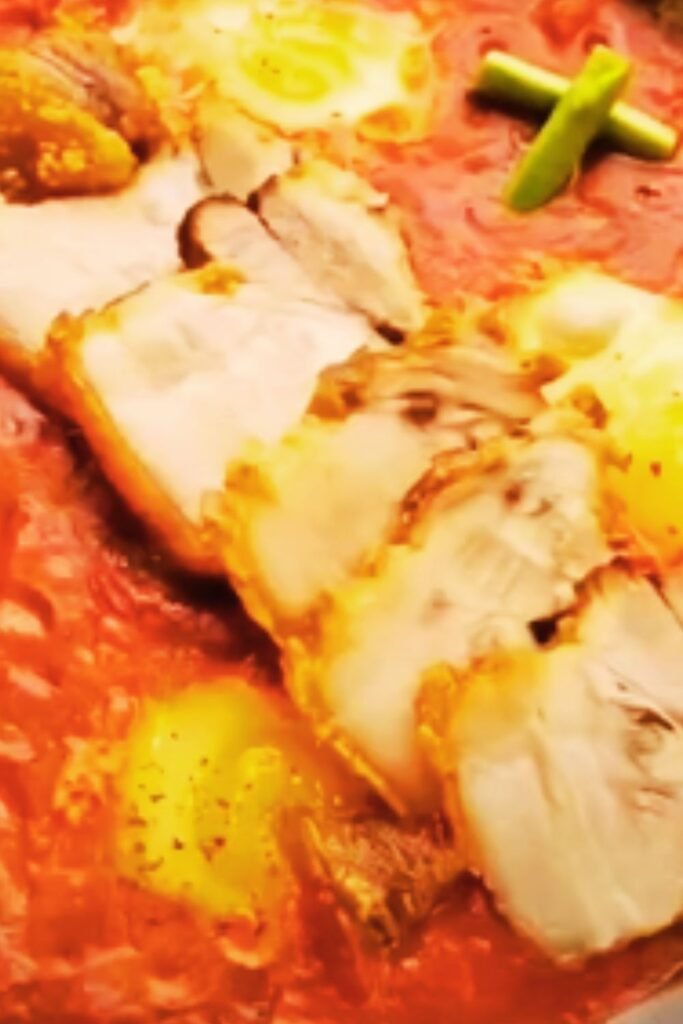
Q&A Section
Q: Can I prepare any components of this dish ahead of time? Yes! The potatoes can be boiled until just tender the day before, then refrigerated overnight. The next morning, simply pat them dry and proceed with the roasting step. This cuts down on morning prep time significantly.
Q: Is this dish gluten-free? The core recipe is naturally gluten-free. Just ensure you’re serving it with gluten-free bread alternatives if needed, and check your paprika brand to confirm it doesn’t contain anti-caking agents with gluten.
Q: How can I make this dish vegetarian-friendly? The classic recipe is already vegetarian! If you’re adapting one of the variations that includes chorizo, simply substitute with smoked tofu or your favorite plant-based protein alternative.
Q: Can I use sweet potatoes instead of regular potatoes? Absolutely! Sweet potatoes create a delicious variation with a beautiful color contrast. They require slightly less cooking time, so monitor them carefully to prevent burning.
Q: What’s the best way to achieve perfectly runny egg yolks? The key is gentle, indirect heat. After cracking the eggs into the wells, cover the pan and cook on low heat. Check after 3 minutes by gently touching the whites—they should be set while the yolk remains soft.
Q: How do I scale this recipe for a larger group? For serving more people, maintain the ratio of ingredients but use multiple pans rather than overcrowding a single one. Overcrowding prevents proper crisping of the potatoes.
Q: Can I make this dish without eggs for someone with an egg allergy? Yes! The crispy, paprika-infused potatoes are delicious on their own. You could also add sautéed greens like spinach or kale, or even top with crumbled firm tofu seasoned with black salt (kala namak) for an egg-like flavor.
Q: What’s the best way to store and reheat leftovers? Store leftovers in an airtight container in the refrigerator for up to 2 days. Reheat in a skillet over medium-low heat. The eggs will no longer be runny, but the flavors meld beautifully overnight, creating a different but equally delicious experience.
From My Kitchen to Yours
Creating this Spanish-style egg dish is more than following a recipe—it’s about embracing the Spanish approach to cooking: respecting ingredients, taking your time, and savoring the results. There’s something profoundly satisfying about transforming a few simple ingredients into something so flavorful and nourishing.
I encourage you to make this recipe your own. Perhaps you’ll add a pinch of saffron to the oil, or incorporate a family favorite herb. The beauty of cooking traditions is how they evolve as they travel from kitchen to kitchen, carrying their essence while adapting to new homes.
As they say in Spain before a meal, “¡Buen provecho!” — May you enjoy your food with pleasure and good health.
I’d love to hear how this recipe turns out in your kitchen. The dance of crispy potatoes, smoky paprika, and perfectly runny eggs creates a symphony of flavors that I hope brings as much joy to your table as it has to mine over the years.
